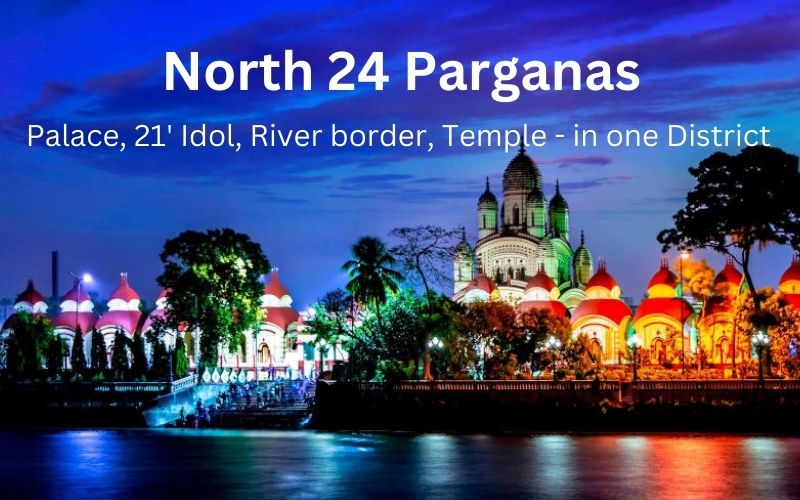
Places to visit in North 24 Parganas district offer a variety of attraction like natural wonders, rich history of the places and site for pilgrimage. North 24 Parganas district is the most populous district of West Bengal. Due to its proximity to Kolkata, destinations in this district can be visited in one or two days from Kolkata and many of those places have good overnight accommodation (eg Barrackpore, Dakshineshwar, Taki or Gobardanga).
It is believed that when Mirzafar became the Nawab of Bengal after the Battle of Palashi, he gave the zamindari of twenty-four parganas like Amirpur, Akbarpur, Azimabad to the East India Company as a gift. Since then the area is known as 24 Parganas. Later in 1986 the district was again divided into two – ‘North’ and ‘South’ 24 Parganas.
Top 8 places to visit in north 24 parganas
Here we will try to give you an overview of what to see, or how to get there, in the top 7 places to visit in North 24 Parganas district:-
1. Dakshineswar Temple
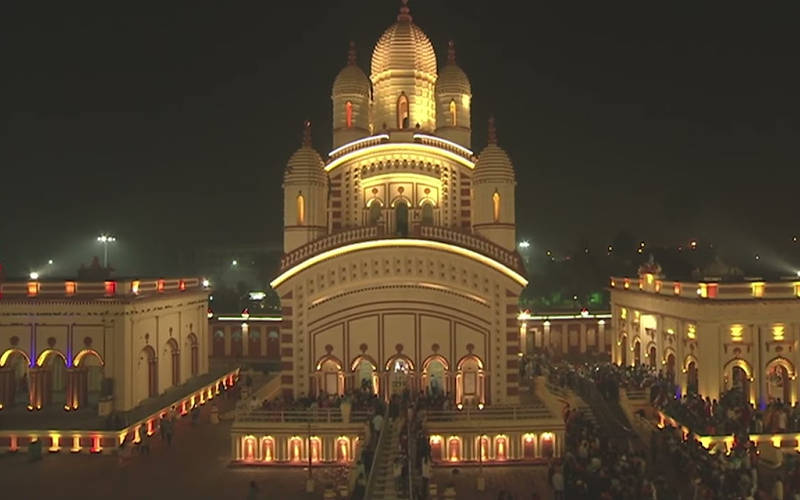
Dakshineshwar Temple is a popular tourist destination not only in North 24 Parganas but also in entire West Bengal. Dakshineshwar Temple is a famous tourist spot in North 24 Parganas district because of its history. Gadadhar Chattopadhyay became the Yugabatar Sri Sri Ramakrishna Paramahamsa in this temple. After the death of Sri Ramakrishna, Swami Vivekananda established the Ramakrishna Math and Mission at Belur on the other bank of this Ganga.
Dakshineswar temple is the most famous place and temple in North 24 Parganas district of Kolkata city. Every day a large number of travelers and devout devotees visit this temple from different parts of the country.
It is said that Queen Rasmani received a dream from Goddess Kali while organizing a pilgrimage to Kashi for Annapurna Puja. And in 1855 he established this Dakshineshwar Kali temple on the eastern bank of the river Ganga. Dakshineshwar Kalimandi is a three-storied south-facing temple built in the Bengali style of Navratna architecture. Maa Kali is worshiped here as Maa Bhavatarini in this temple. The temple is located at Kamarhati in North Twenty Four Parganas district. The place got its name as Dakshineshwar from the temple.
How to reach Dakshineshwar
Coming to Dakshineshwar is very easy, if you want to come from Kolkata, you can choose any train, bus, metro, metro has become more convenient now. Moreover, now that Dakshineshwar Corridor or Skywalk has been opened, you can get off the metro or bus and reach the temple directly through this Skywalk without any hassle.
2. Dhanyakuria
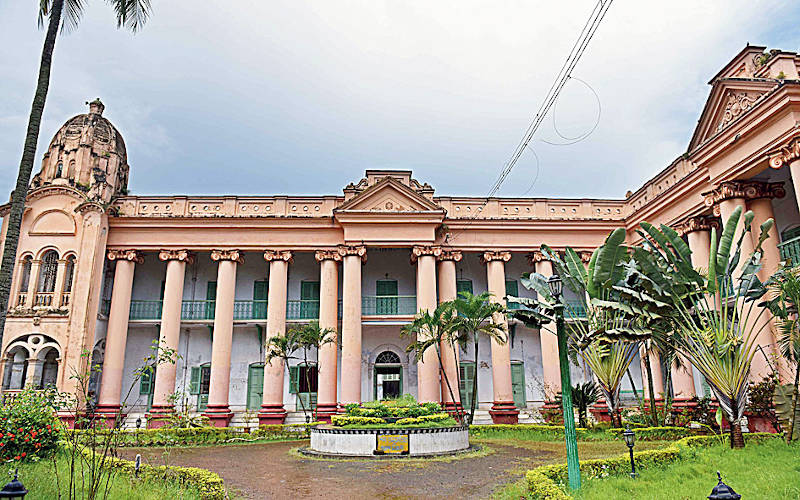
Dhanyakuria village is located between two towns of North 24 Parganas, Barasat and Basirhat. A small but flourishing village under Matia Police Station on Taki Road. Dhanyakuria is also called ‘Village of Castles’. Apart from three large zamindarbaris, this affluent area has many temples of various deities, schools and most notably Gayen Gardens along Taki Road.
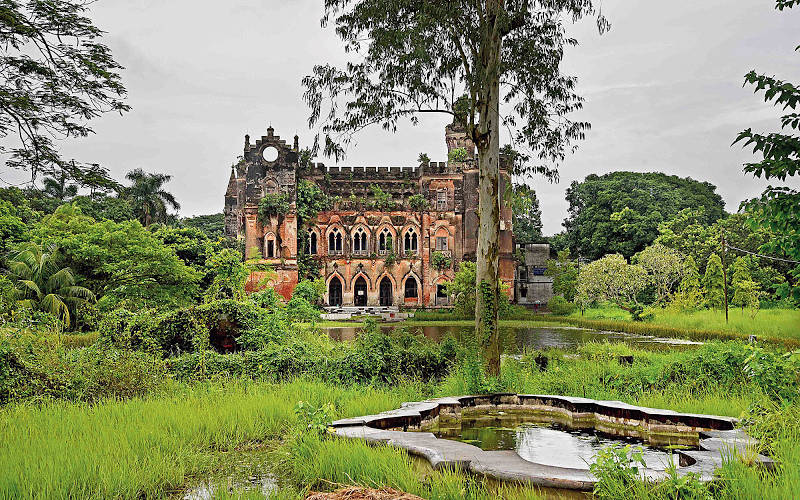
At the entrance to the village from Taki Road, you will see the ‘Gayen Garden’, made in a perfect European architecture. It was the garden house of Gayen zamindars. After independence it was taken over by the government and operated as an orphanage. Now it has been commissioned by the Heritage Commission to be renovated, so even if you can’t go inside, you will be amazed by the European-style gate of this Gayen Garden.
A few minutes’ walk past Gayen Gardens and into Dhanyakuria village, you will find Dhanyakuria High School, established in 1884, one of the oldest schools in Basirhat sub-division. Dhanyakuria High School has recently been declared a heritage site.
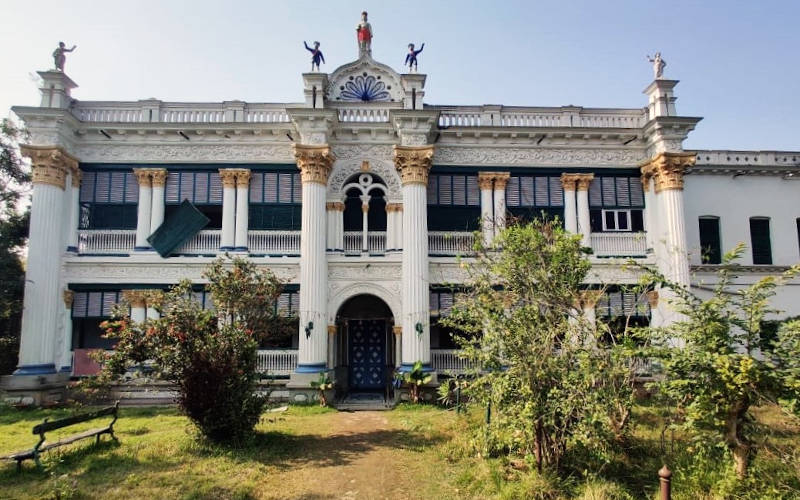
In Dhanyakuria you will actually find three huge zamindarbaris, which is quite remarkable for such a small village. The zamindarbaris are:
- Gayen Bari or Gayen Manson. Founder Mahendra Nath Gayen.
- Vallabh Bari or Vallabh Mansion. Founder Shyam Vallabh.
- Sau Bari or Sau Manson. Founder Patit Chandra Saw.
Apart from Sau, Vallabh or Gayen mansions, there are separate temples, garden houses, Nahvatkhanas, etc. of each zamindar house, the architecture of which would make you wonder that in a village, so far away from Calcutta, such architecture were build centuries ago.
Durga Puja is celebrated here with great fanfare, so if you want to come here, you must come during Durga Puja to have a feel. At other times, many permits may be required to enter the zamindar houses.
How to go to Dhanyakuria?
- By car: It is very easy to come here, Dhanyakuria is on the way to Taki or Basirhat, Barasat-Basirhat road or Taki road is right next to this village Dhanyakuria. You you coming in a car then from Esplanade you will reach in 2 and a half hour.
- By Bus: If you want to come by bus, take any public or private bus from Kolkata’s Dharmatala to Basirhat or Hasnabad and get down at Dhanyakuria stop. It will take two to two and a half hours to go.
- By Train: If you want to come by train, the nearest station is Kankra – Mirzanagar or Maltipur station. I have to take Hasanabad local from Sealda station and alight at these stations.
Tips:
Adequate tourism infrastructure such as good accommodation or hotels for good food has not yet been developed. So Take some food with you. It is best to have own vehicle to move around within the village. Within the village the road is not that bad. Above all, visit and take pictures of the architecture of the village temples or buildings that will fill your mind.
Also Read: Dhanyakuria the Village of Castle
3. Chandraketugarh
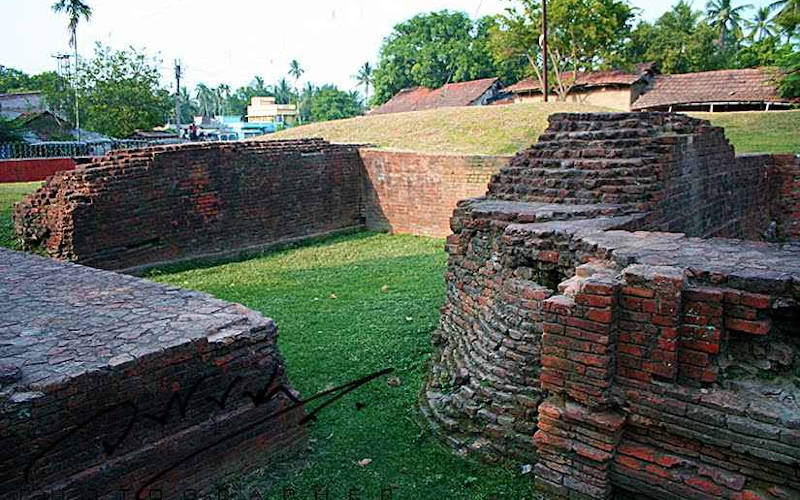
Chandraketugarh is an important archaeological site of Bengal located in Barachampa village under Deganga block of North Twenty Four Parganas district. Two five-layered archeological sites of Barachampa have been discovered during excavations. Among which Khona-Mihir mound on the north side of Barachampa and Chandraketugarh fort on Haroa road on the south side.
It has uncovered artifacts and ruins from the Kushana, Mauryan Gupta and post-Gupta eras from 400 BC onwards, indicating the antiquity and historical importance of this area. Such ancient artifacts have been found in very few places in Bengal. The Chandraketugarh Museum has been built in Barachampa with the archaeological materials found in these two places. Some of the artifacts are kept in the Ashutosh Museum of Calcutta University.
At the Ashutosh Museum of Calcutta University, Kunjbehari Goswami and his colleagues excavated for about 10 years until 1968. The most notable of these is the mound of Khona-Mihir. The “Mound of Khona-Mihir” section is associated with the famous astronomer Varahmihir and his daughter-in-law Khona, the navaratna of the ancient Indian king Vikramaditya; Legend has it that Khana and Barahmihir lived here.
Apart from the surrounding, there are several legends about the battle of King Chandraketu and Pir Gokchand with him in the ruins at Devalaya village. According to various historians, Chandraketugarh was probably the capital of the famous ancient sea-port ‘Gangaridai’ or ‘Ganges’ port mentioned in the ‘Periplus’ and Ptolemy sources.
How to reach Chandraketugarh
The actual location of the Chandraketugarh, also known as Khona-Mihir mound, is near the intersection of the crossroads of Berachampa.
- Bus: To reach Chandraketugrah, you may avail govt or private bus services from Esplanade and reach there in 2 – 2.30 hours. From Berachampa you can Auto or rickshaw to the sites.
- Train: You may avail local train for Hasnabad from Sealdah. In less than 2 hours you get down at Haroa station. From there take auto rickshaw and in 15 minutes you reach Chandraketugarh directly.
4. Taki
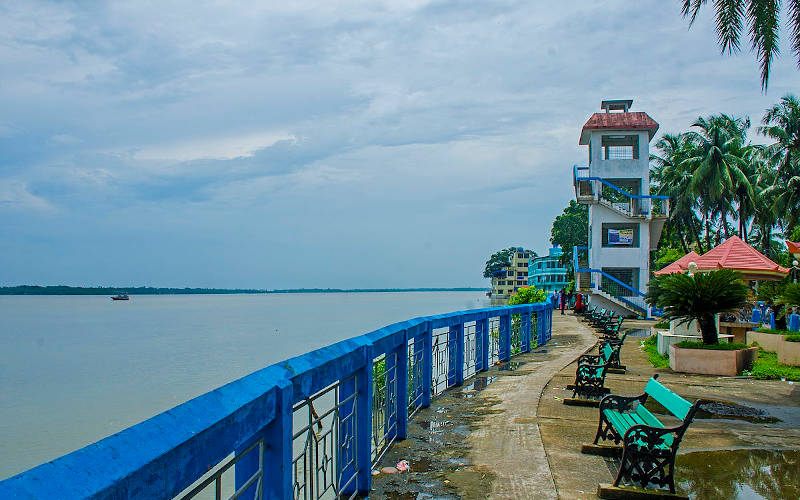
Taki town is a popular tourist spot in North 24 Parganas district, not very far from Kolkata. Taki is ideal for a day or weekend destination. Boat trips on Ichamati river across the international border with Bangladesh are currently attracting a lot of tourists. However, the largest gathering of tourists is on the day of Durga Puja’s bijoya dashami, when people from both sides of the border gather on the river banks to watch the bhasharvan in the riverbed. In fact, Taki is a very tidy, small town under Hasnabad police station in North 24 Parganas district.
Below are some places that you must visit while travelling Taki.
- Taki Rajbari
- Rajbari Durgadalan.
- Mini Sundarbans
- Ray Chowdhury Zamindar House.
- Jora Shiva Temple.
- Kuleshwari Kalibari.
- Ecopark.
- Boat ride on Ichamati river.
How to go
You can do Taki both ways, full day tour in one day and return by afternoon train, this is also very popular and you can explore the whole Taki in one or two days by Taki. From Sealdah, take the Hasnabad Local and get down at Taki Road Station, then reserve a Toto and see the places.
5. Boro Maa of Naihati

Boro Maa of Naihati is one of the main attractions of Naihati in North 24 Parganas during Kali Puja. Devotees from districts as well as country and even abroad come to this temple to fulfill their wishes. At present Boro Maa of Naihati is famous throughout the state and the country, a 21 feet tall idol adorned with golden garlands, the motto of Boromaa Puja is ‘Religion for individual, Boro Maa of all’, whoever has hope comes to Boro Maa with faith and worship. Many devotees of the Boro Maa show their dedication by crawling on the road of deity’s immersion ceremony. When the desire of the heart is fulfilled, the devotees again roll the ornaments to the mother.
This is the oldest Kali Puja of Naihati. Today everyone knows that Kali as Barama. It is very difficult to find a person who has not heard the name of Naihati’s great mother. This puja is very crowded during Kali Puja. Devotees visit here throughout the year apart from Kali Puja. The main attraction of Bara Maa Puja is the immersion of the mother, which is witnessed by thousands of people.
The idols here are decorated with flowers instead of gold ornaments before being immersed, then immersed in the Ganges. A bronze statue of Mother is being made by the committee so that devotees can have darshan of Mother throughout the year. This temple is located very close to Naihati station, you can walk to this temple after getting down from the station.
How to reach Naihati
- From Sealdah take the Ranaghat or Krishna Nagar local train and alight at Naihati station.
- Alternatively, Naihati can be reached on the other side of the Ganga by getting off at Bandel or Burdwan (Via Main) Chunchura station from Howrah station.
6. Barrackpore
Barrackpore was an army barracks from the East India Company period and hence the name Barrackpore. It was from this Barrackpore cantonment that the sepoy mutiny spread throughout the country. There are many places to visit in and around Barrackpore city which may not be possible for one to see in one day. So we have given the details of some of the popular tourist spots.
a. Annapurna Temple
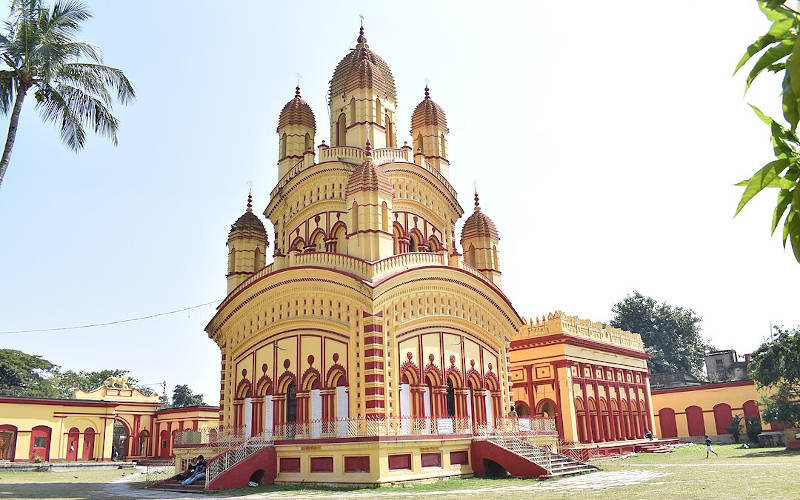
Annapurna Temple is the most popular tourist destination in Barrackpore. This temple was built in 1875 after 20 years of construction of Dakshineshwar temple. Srimati Jagdamba Devi, the youngest daughter of Rani Rasmani Devi, established this temple to fulfill the wishes of her husband Sri Mathurmohan Biswas. Sri Sri Ramakrishna Paramahansadeva is said to have visited this temple during its inauguration. Right behind this temple is Rani Rasmoni Ghat. You can reach here by Toto from two stations Barrackpore and Titagarh. A very beautiful temple.
b. Gandhi Ghat
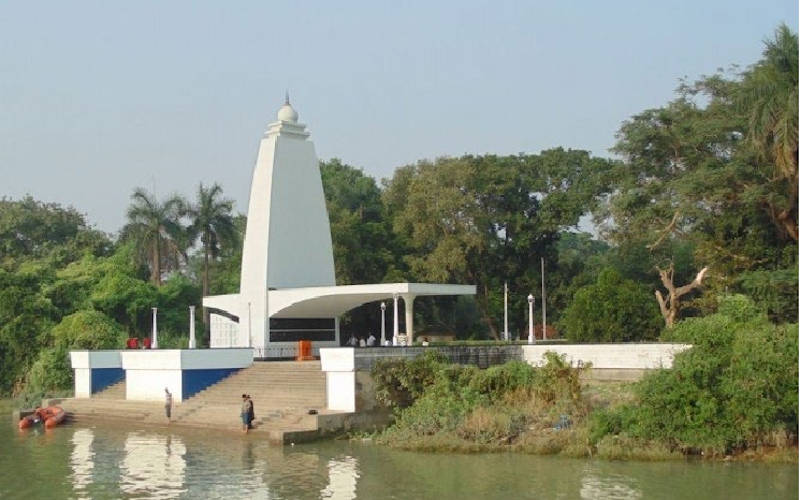
The Gandhi Ghat is situated on the banks of the Ganges, a little far from the Annapurna Temple. After Mahatma Gandhi’s death, his ashes were interred in various places in India, one of those places being Gandhi Ghat. The name of the place also became Gandhi Ghat since then, Jawaharlal Nehru himself visited here. Besides that, a beautiful memorial pillar has also been constructed in this Ghat in memory of Gandhiji.
c. Mangal Pandey Park
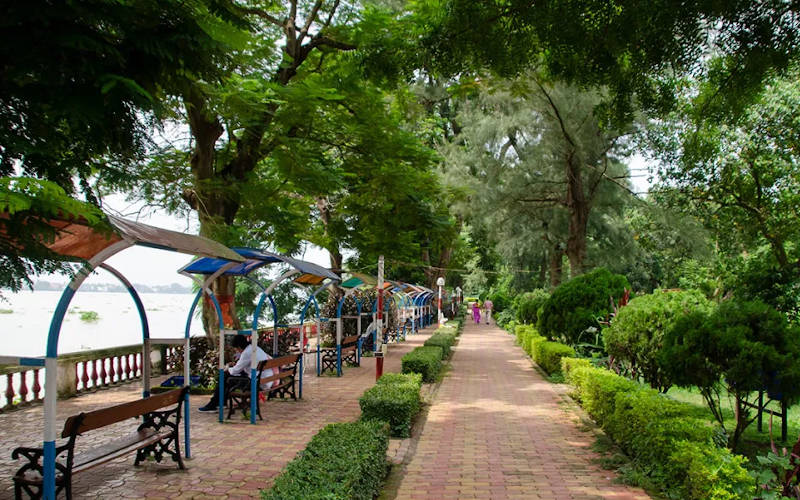
Mangal Pandey Park in Barrackpore is a beautiful park built in honor of Mangal Pandey, the first nationalist who rebelled against British tyranny. It was from this place that Mangal Pande started the sepoy mutiny and ignited the rebellion against the British. There are beautifully landscaped gardens, a statue honoring Mangal Pandey and the adjacent Mangal Pandey Ghat. You can spend a lot of time sitting by the river in a very beautiful environment.
Apart from these, the Bartholomew Cathedral, Jawahar Kunj, Lord Canning Statue and Lady Canning’s Tomb, Gandhi Museum, Rashtraguru Surendranath Banerjee’s Residence or Barrackpore Cantonment are noteworthy.
7. Bibhutibhushan Sanctuary
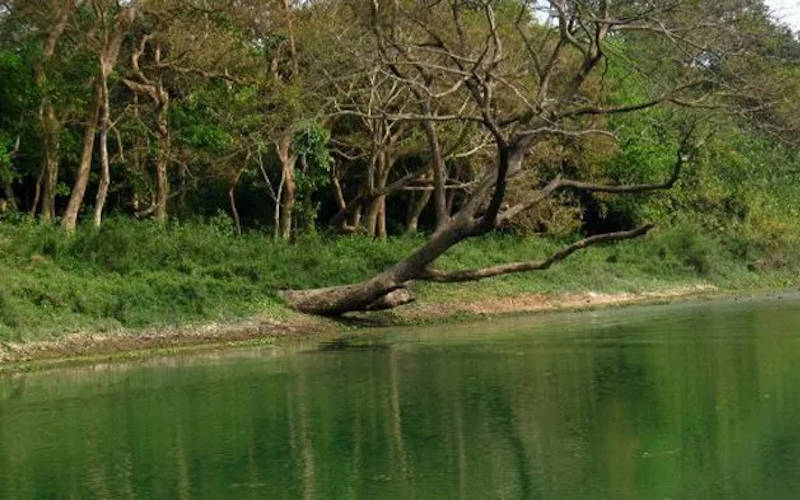
Bibhutibhushan Wildlife Sanctuary or Parmadan Forest is located in Bangaon subdivision of North 24 Parganas. This place is located at a distance of 25 km from Bangaon city and about 100 km from Kolkata.
A lot of Chitra deer can be seen here. At the beginning of the construction of the sanctuary, four chitra deer were first brought from Alipore Zoo. Later their numbers also improved considerably. There are many native bird species here. Apart from the sanctuary, there are several other attractions in the region. Other attractions
The beautiful Ichamati river flows past this forest named after the poet Bibhutibhushan Banerjee. Bengal stands on the other side of the river. And on the other side of the jungle, in Mangalganj village inhabited by tribals, the infamous Neelkuthi is still standing with the memory of brutal torture by the British. Tourists flock to see. Mangalganj Park is a wonderful picnic spot. Also, in Mangalganj, there is a dilapidated Nilkuthi bearing the mark of indescribable oppression of the Nilchashi by the British.
How to go to Vibhutibhushan Sanctuary
About 110 km by road from Kolkata, nine to three and a half hours. If you want to go by train, you have to get down at Bangaon or Ranaghat station. From the station, you can easily reach Bibhutibhushan Sanctuary near Bangladesh border by bus or rented car.
8. Gobordanga
In the second half of the 18th century, Shyaram Mukhopadhyay bought Gobardanga zamindari from the British. Shyaram’s son Kaliprasanna Mukhopadhyay took the estate forward with skillful hands. The history of Gobardanga is said to be older than that. We will discuss Gobardanga Rajbari, Prasannamoyi Kali Mandir and Baor.
Prasannamayi Kali Mandir
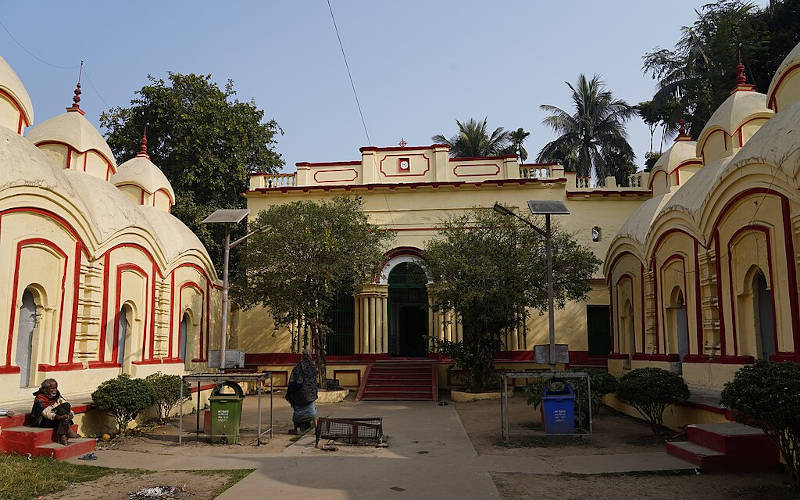
The first place you must visit after coming to Gobardanga in North Twenty Four Parganas is the 200 year old Maa Prasannamoyi Kali Temple. The zamindar Kaliprasanna Mukhopadhyay established this Kalibari in 1822. Inside this south-facing Kali temple is a carved stone idol of Maa Kali, flanked by a twelfth Shiva temple.
Gobardanga Rajbari
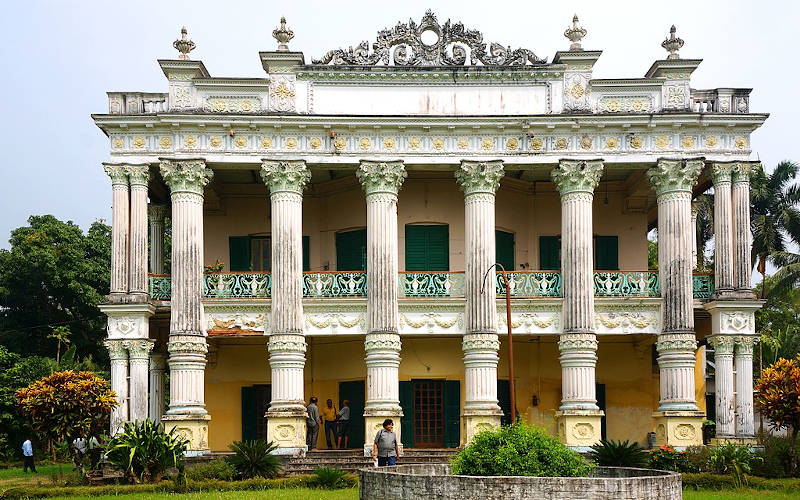
Next to Gobardanga Prasannamayi Kalibari is Gobardanga Rajbari or Mukherjee Rajbari. Sonaja Mukhopadhyay family’s original residence was present in Jessore, Bangladesh, then for some reason they came to Gobardanga and started living, they bought the zamindari from the British East India Company. This Gobardanga Rajbari or Zamindarbari starts from there.
Baor
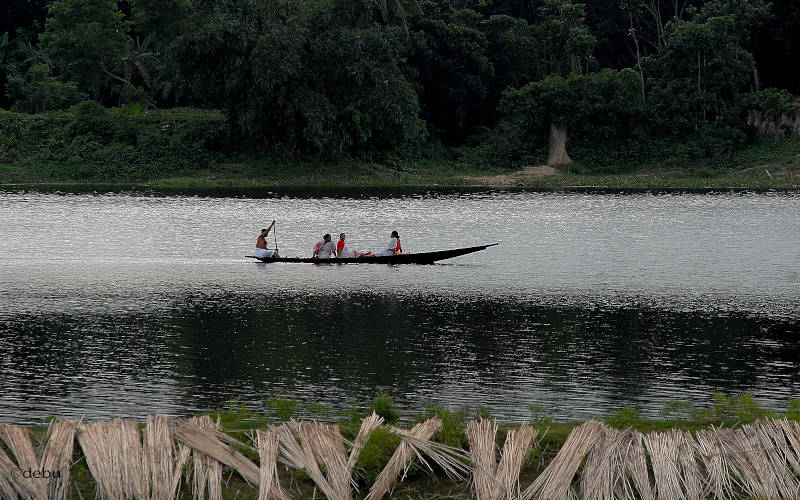
Gobardanga is famous for its baor. The word bao means reservoir. One of which is Konkana Baor and Beri Baor. You can also take a boat ride here from Nimai Ghat in Beri Baor. It is only 5 minutes away from Panchpota Bazar. Also you will find more things to see in Gobardanga, can be a good full day tour.
How to go Gobardanga
From Sealdah take Bangaon local by train and alight at Gobardanga station. From there you will find toto and van stands near Prasannamoyi Kali Mandir, Rajbari or Baor Jana Station.
